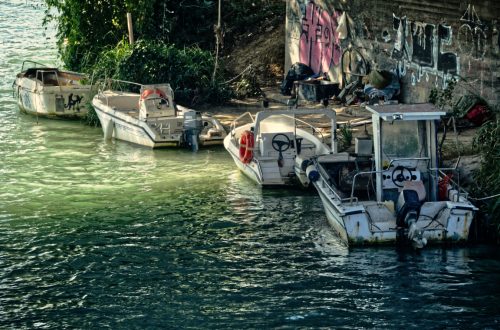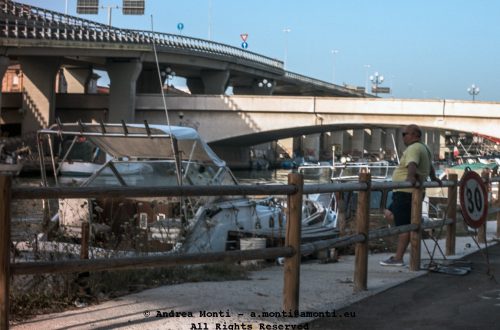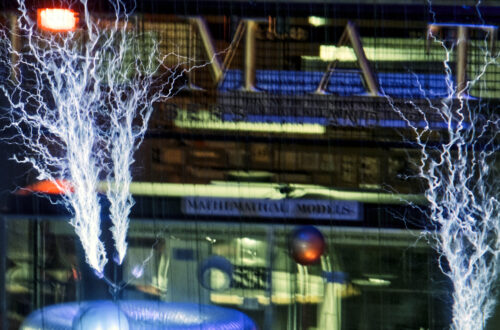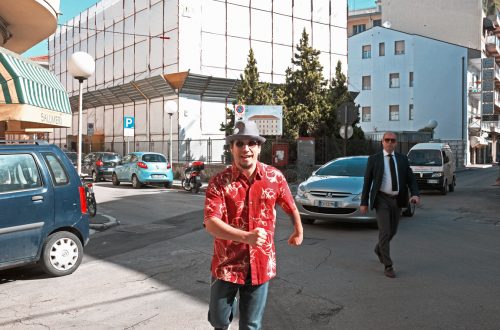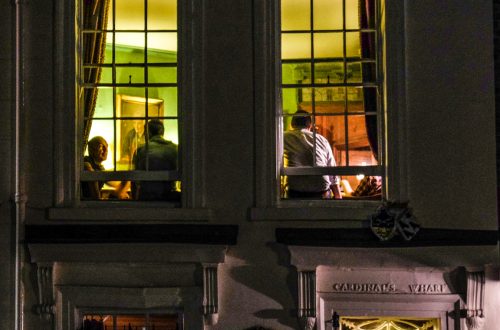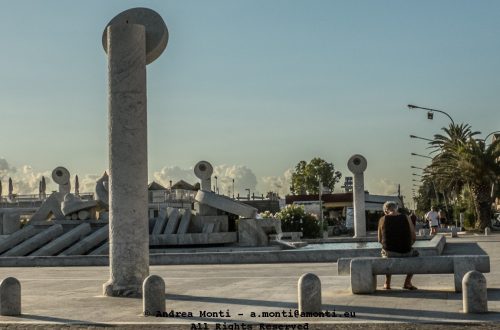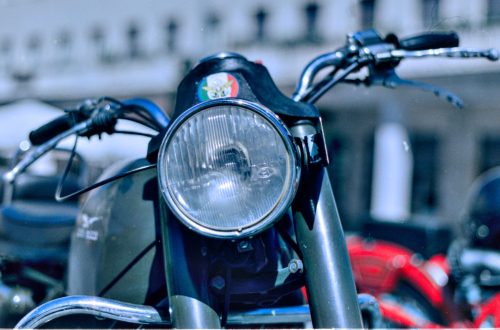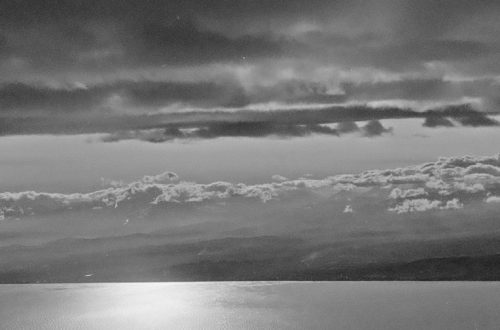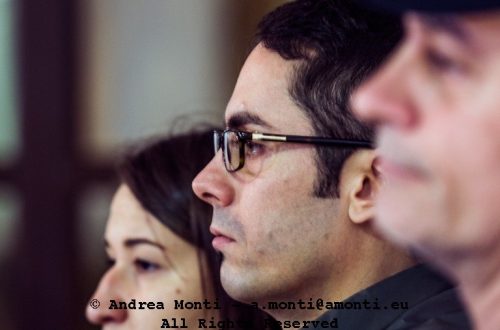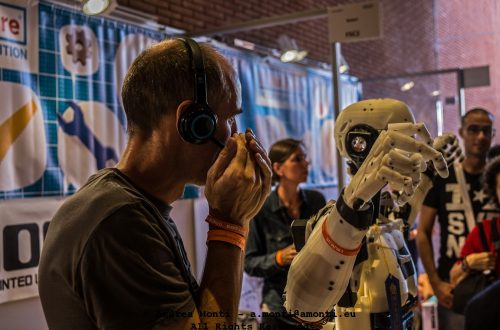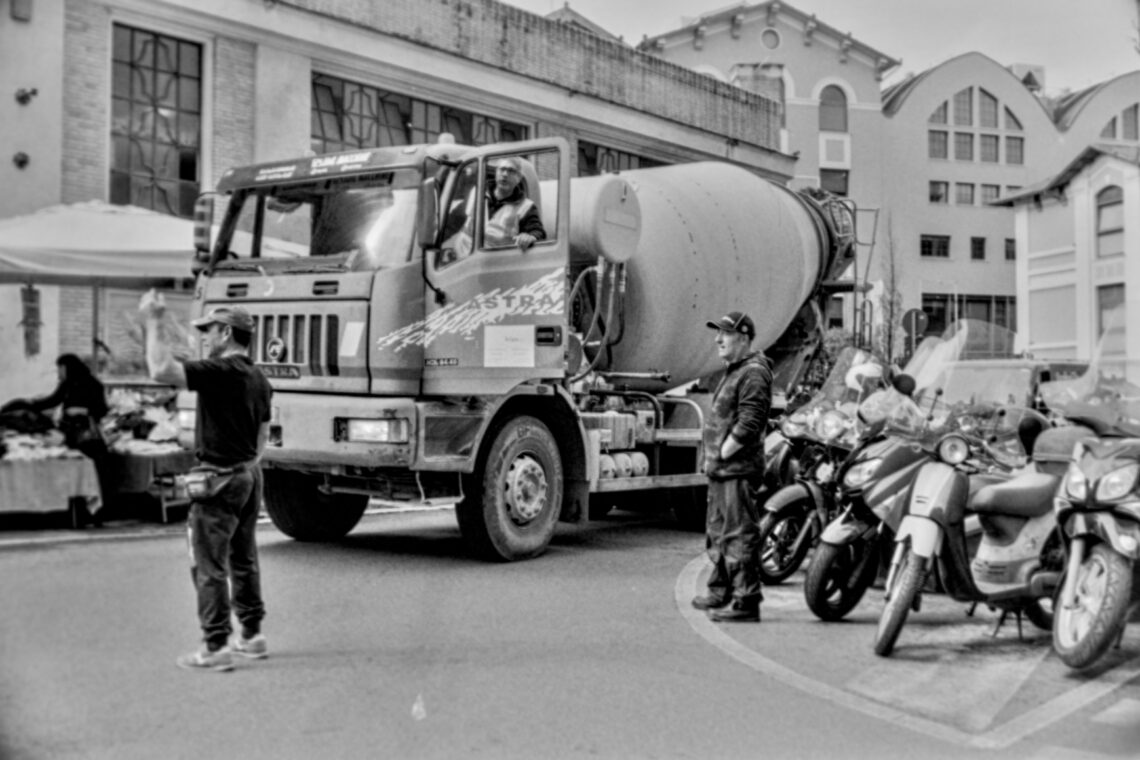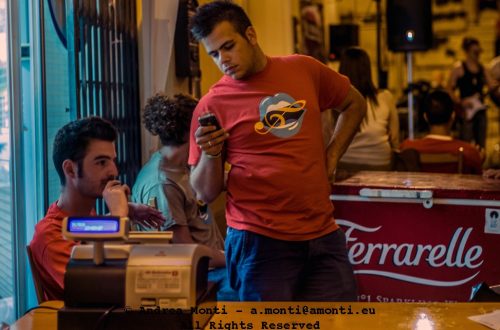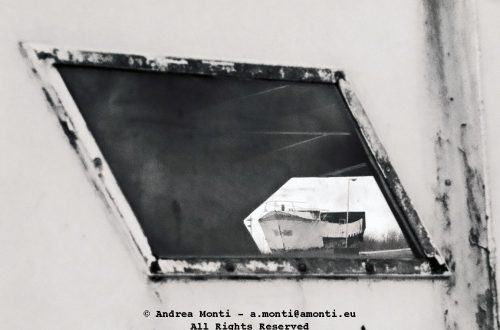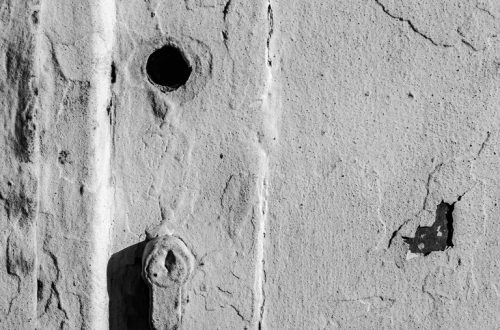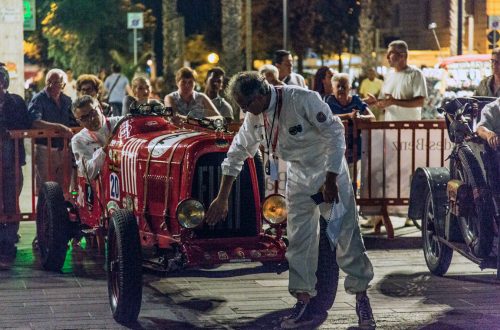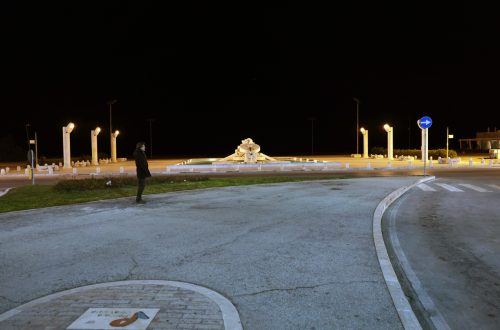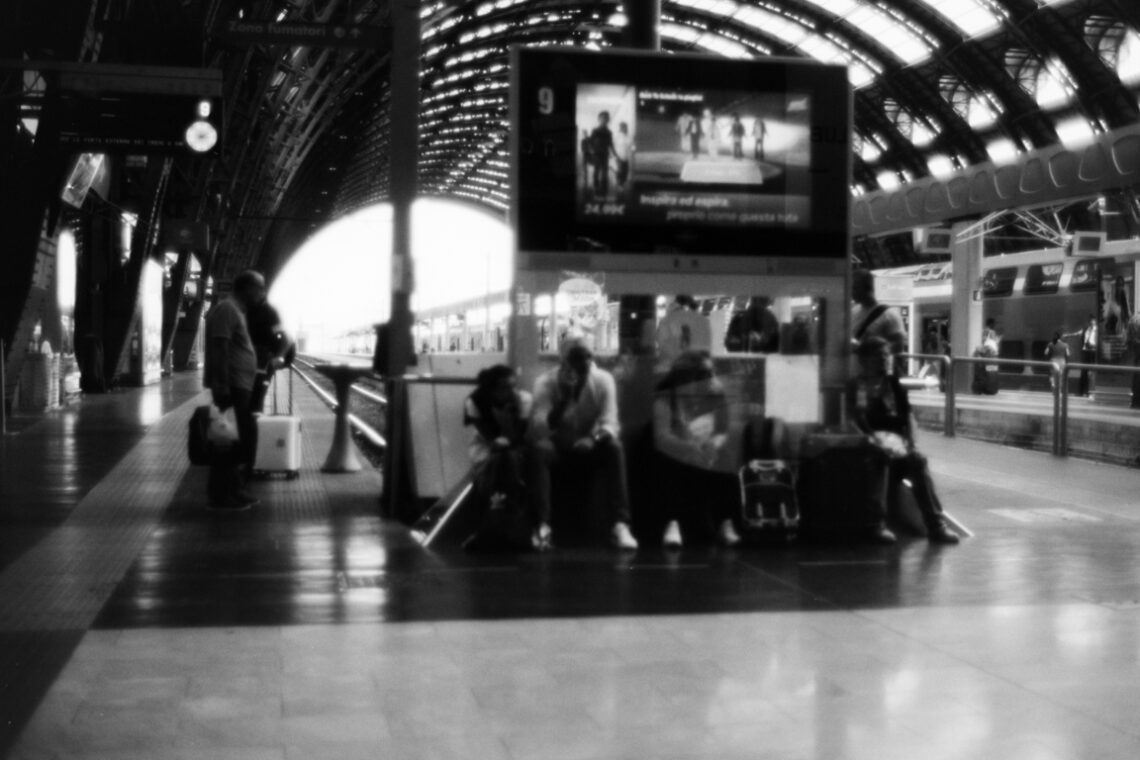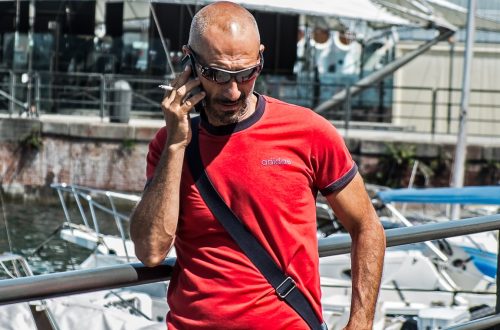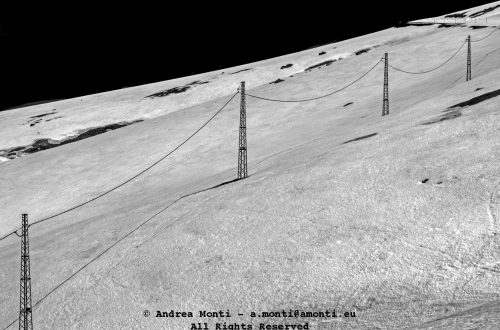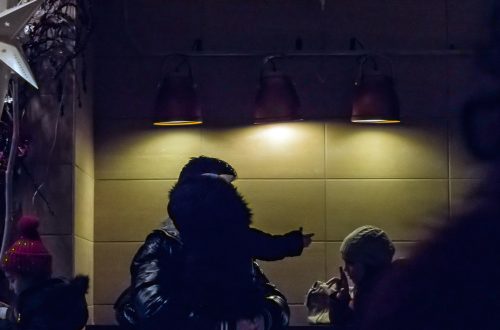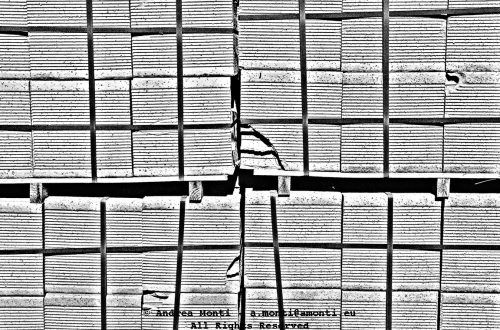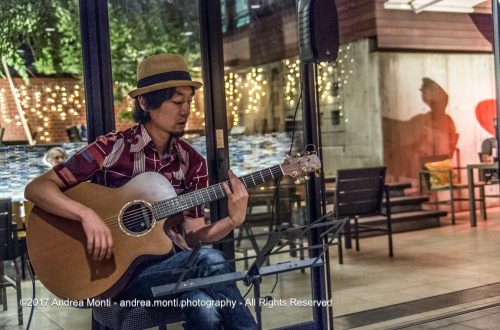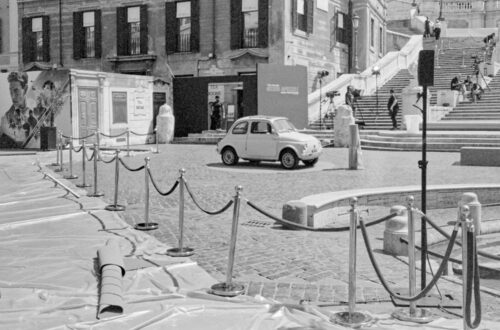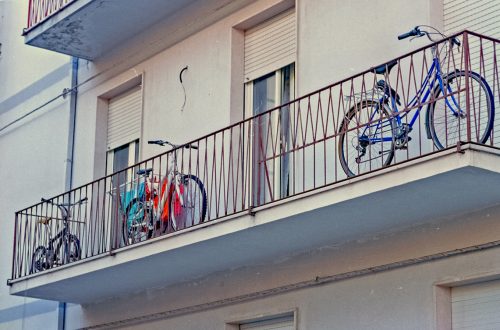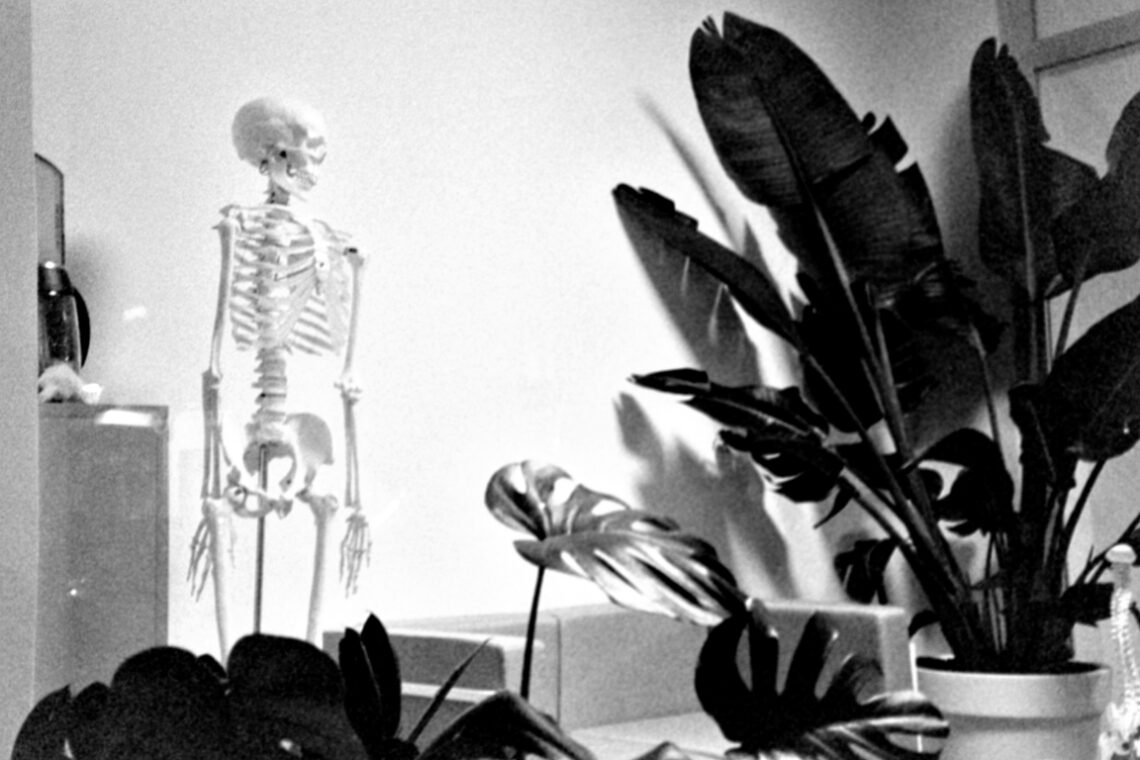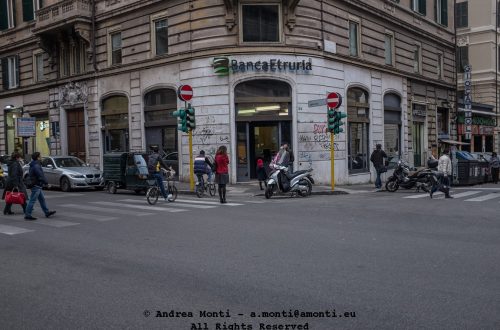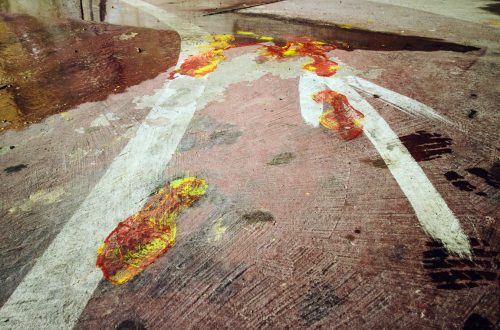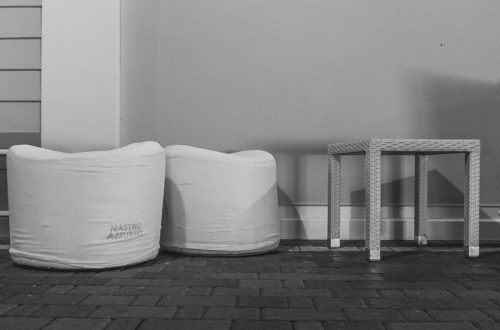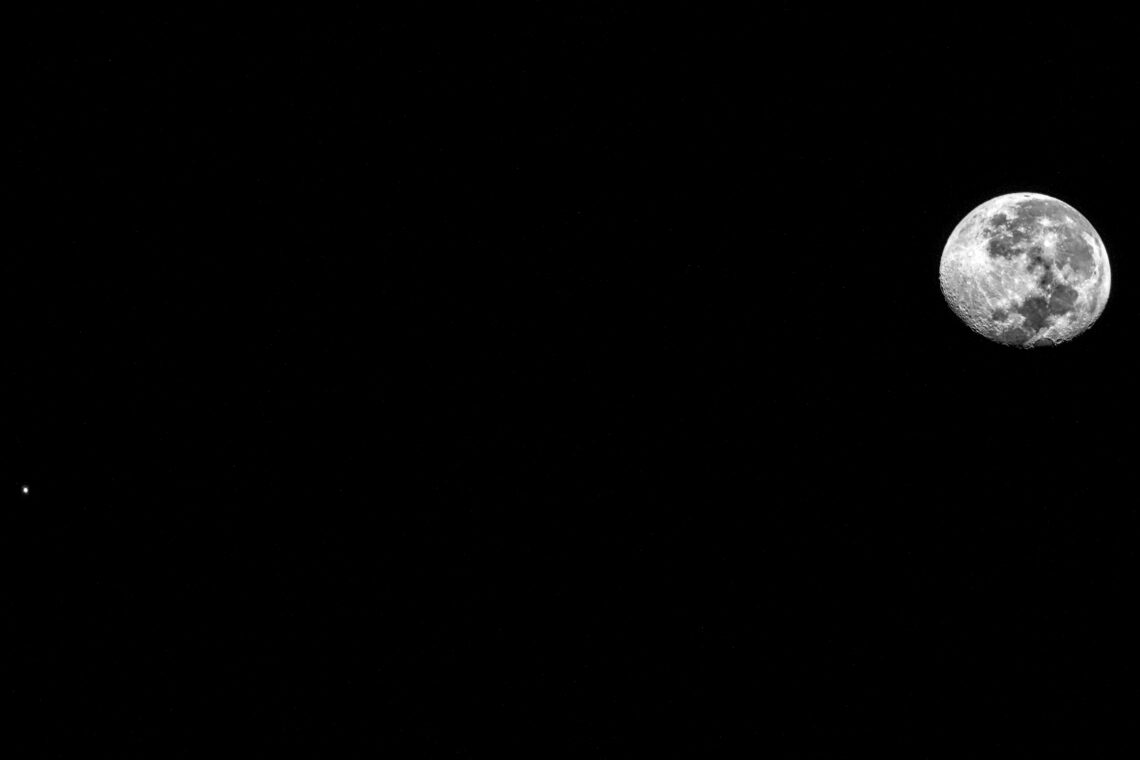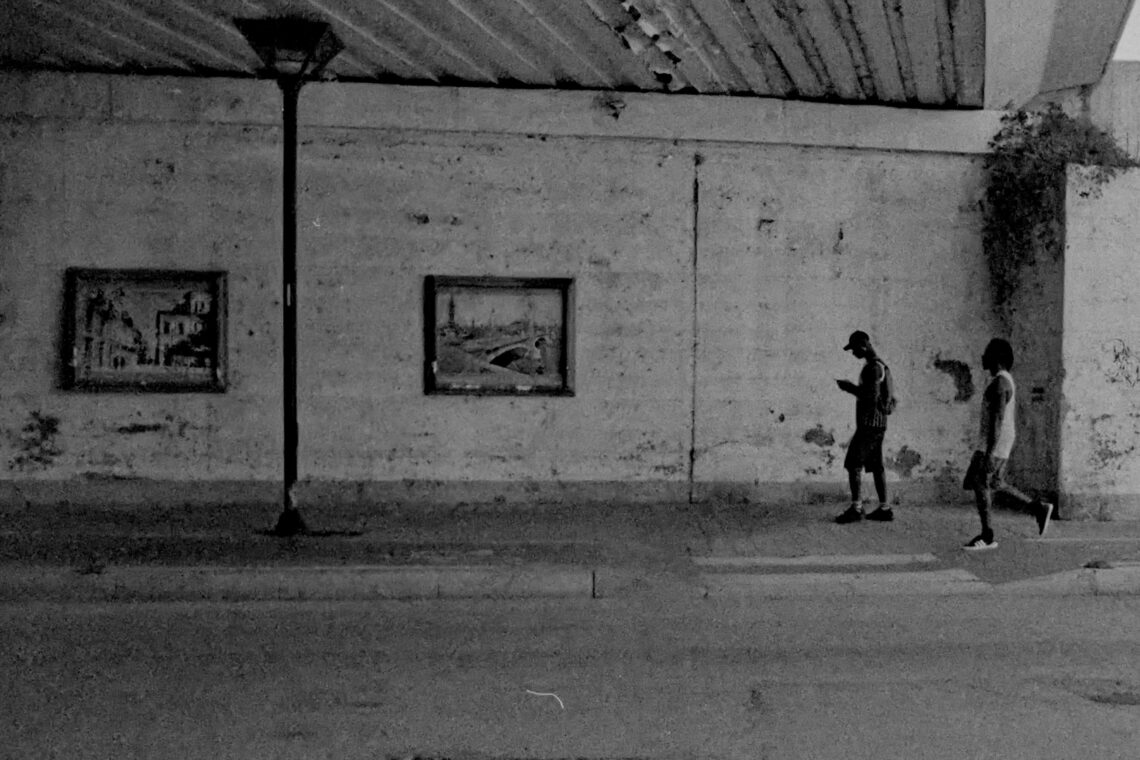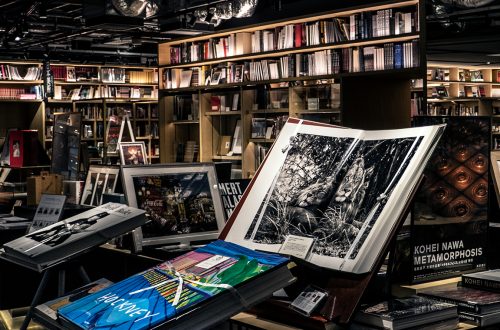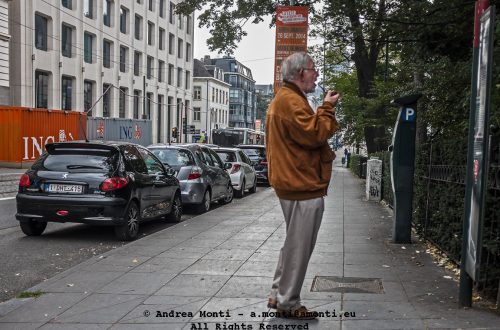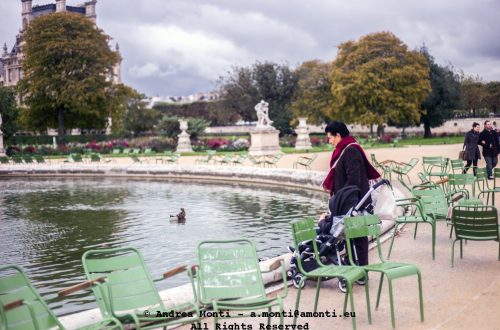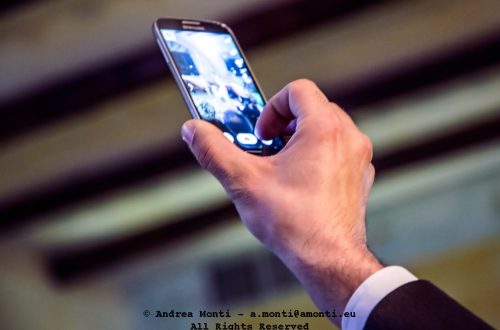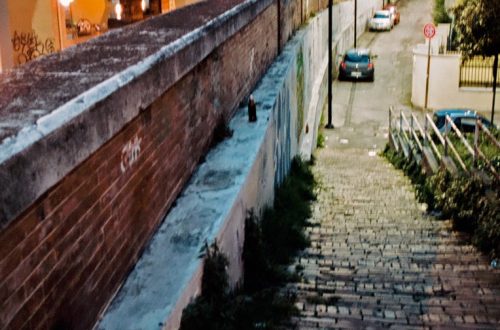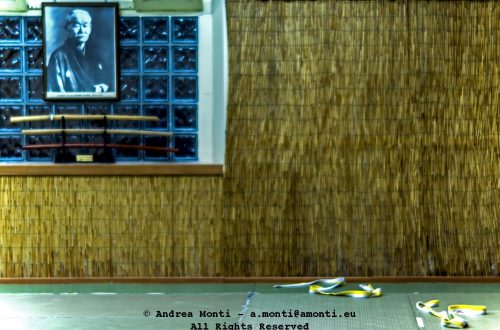-
Creativity vs Originality
Is the photo above creative? Is it original? Well… yes and no. It is certainly original because I ‘in person’ took it, and it is creative because – regardless of the aesthetic result – I took the time to arrange all the elements (composition, light, etc.) in a coherent moment —and I have the film negative to prove it. On the other hand, it is neither original —as in ‘unique’— nor creative because the same photo can be found here and maybe elsewhere on the Internet. Obviously, the linked photo it is not ‘the’ same as mine, because it is clear that they were taken at different times and places (mine was…
-
Pentax – In Praise of Usability of Cameras and Lenses
The Internet is full of columns and videos about why ‘I left brand X for brand Y’, magnifiying this or that ‘new feature’ that forced a photographer to ditch his previous setup in favour of a brand new one. Sometimes there is a genuine motivation behind such a choice, sometimes – often – it is just a clickbait set up by the need (or hope) to monetise a piece of content published on a social network. This long introduction violates the golden rule of journalistic writing – tell the reader what’s the matter in the first paragraph or so – but it was necessary because this article is exactly that:…
-
5 (improbable) Frames with a roll of Ferrania Orto and a Nikon 35TI
The photographer is a peculiar type of social being, characterised by a ‘rules are meant to be broken’ attitude in the search for the perfect exposure. So, sooner or later, all the dogmas about composition, hyperfocal, zone system, rule of thirds, etc. will be put aside to try something ‘different’. This is what happened with these five images, taken at night in Piazza Venezia and Via Salaria in Rome with a Ferrania Orto on a Nikon 35TI; a rather strange choice given the inherent limitations of an orthocromatic film and a 2,8 35mm lens of a compact camera in this scenario. Against all odds the 35TI performed well (especially in…
-
A Stop in Reggio Emilia
I was on the Freccia Rossa, heading north, not looking to make a photograph — but then the train slowed. It always does here. Reggio Emilia AV, Calatrava’s cathedral of transit. Seen from inside a carriage, the station transforms into a cinematic abstraction: rhythm, shadow, tension. You’re not meant to get this view. You can’t stand still inside it, only pass through. This frame came with no time to compose. I raised the camera, guessed exposure, shot through a tinted window, and trusted instinct. The image that resulted is harsh, grainy, flawed — and I kept it that way. A perfect rendition would have dulled it. What mattered was the…
-
An Exercise in Composition (was: Rowing Boats)
Initially, I took this photo to document the poor state of a rowing teams’ dock. The idea was to praise the passion of this small group, who in the indifference of the general public, keep this discipline alive in a town, where soccer reigns supreme. However, when I saw the photo, it was the composition that attracted my attention: a classic example of the use of converging lines to drive the eye of the viewer. My only regret is that I failed to frame the small boat on the right, missing its bow. Had I been shooting digitally, I would have checked the result and retake the photo. Film, by…
-
Iphone 15 Billboard in Via XX Settembre
This is an attempt to exploit the limitations of an orthocromatic film. Shadows and highlights were deliberately pushed, as was the contrast. This isn’t about the billboard. Not really. Yes, there’s a giant child smiling over Rome, her face stretched across several metres of vinyl, captured “with an iPhone 15,” if we’re to believe the tagline. She’s luminous, playful, part of a campaign you’ve probably already seen before you’ve even looked at it. But the photograph is something else. This was shot on orthocromatic film—intentionally. Shadows are carved in deeper than they should be. Highlights flare and collapse detail. The tonal scale isn’t flattering, and it isn’t faithful. It’s limited.…
-
Nagasaki Biker
Sometimes carrying a camera with a slow autofocus, slow shutter and low ISO can be a hindrance. Had I had a better camera and a faster film, this photo would have been much better.However, it is the eye that is to blame, not the old Nikon 35TI. I realised too late that what I was looking at could have been an image and had to react within a few seconds. In those conditions, the camera did what it could, but if I had been aware of my surroundings, I would have been ready at the right moment. So I paid the price for my bad habit of relying on gear…
-
Different Stories
Taking ‘static’ pictures, such as those of buildings and other architectural structures, can be quite challenging, as it is easy to fall into obvious, already seen compositions that rob the shot of any individuality.One of the things that can make an otherwise dull image more interesting is the presence of some kind of action that blends in with the stillness of the environment.In this case, the woman on the phone is in exactly the same position as the model on the billboard. Only they are telling two different stories.
-
二千円
The 2,000 yen note is something of a rarity even for the Japanese. As Japan is mainly a cash-based society (at least for everyday life), I made sure to carry enough money on my recent trip to the Kyushu region.The bank gave me a wad of brand new ¥2,000 notes, which were so unusual that they attracted the attention of many people I exchanged them with. The photo was taken with a КИЕВ 60 TTL and a волна 80/2.8, the film was a Ferrania P30.
-
An Antique Shop in via Cadorna
I made this frame with a Bessa R2 paired to a Nokton Classic 35mm f/1.4, loaded with Kodak Tri-X 400. That combination has a way of imposing its character on an image, and here it played straight into the atmosphere of the scene. The urn in the foreground caught my attention first, its surface worn and flaking, the sort of texture that Tri-X renders with a quiet authority. Its reflection in the shop window doubled the presence without turning the composition into a perfect mirror—imperfections in the glass kept it alive. The rust-speckled lamp leans towards it, both physically and compositionally, as though curious about the object’s past. I exposed…
-
A jam in via Alessandria
Taking pictures with a fully manual camera is a way to keep practising the basics. Honestly, I would not use a film camera for a professional assignment —at least, not as the main one— but it’s worth doing it in a less challenging condition.As per the technicalities, waiting for the next batch of Ferrania Orto to arrive, I resorted to a Kodak Tri-X 400 roll, which is my favourite film at these ISOs.
-
As Seen on Ferrania Film’ Stories section…
A selection of the pictures I took this year in Boston and Tokyo has been published on the official Film Ferrania website, in the ‘Stories’ section.
-
Ghosts of Ginza
Another shot from my last visit to Japan, taken with a Nikon 35TI and a Ferrania Orto in the corridors of the Ginza subway station, Tokyo.
-
Isolation in Public Spaces
Tokyo’s subway is rarely empty, yet in the press of bodies and the blur of passing stations, solitude often asserts itself. This frame was made with a Nikon 35TI, paired with Ferrania Orto, whose orthochromatic palette brings a certain austerity to the scene. The absence of red sensitivity pulls skin tones toward pallor and renders signage and advertising in a flatter, more subdued register — perfect for distilling a moment that’s more about psychological distance than geographical setting. The composition is anchored on a single figure, set against the geometry of the carriage interior. Lines from windows, doors, and grab rails intersect in a way that almost corrals the subject,…
-
How Privacy Hysteria Killed Street-Photography
At other times I would have dismissed this image as ‘out of focus’ and unusable. Just another missed shot caused by poor focusing technique on a fully manual film camera. Nowadays, however, I have begun to change my attitude towards these kinds of blurred images because of the privacy hysteria affecting the practice of street photography. There have been cases where people have been found guilty of harassment for covertly taking pictures in public spaces, but street photography has nothing to do with criminal behaviour. There is a huge difference between taking sneaky, random, meaningless pictures of people on the street and trying to freeze sketches of life to tell…
-
The Traveler’s Dilemma: Where To?
Shot on a Voigtländer Bessa R2A with the Nokton Classic 35mm f/1.4, this frame unfolded in less than a breath. A man, motionless, eyes scanning a departure board. Behind him, the chaos of travel hums, but he’s suspended—mid-decision, mid-wondering. No phone, no luggage in view. Just posture and projection. The Bessa’s meter can be unforgiving in contrast-heavy interiors, but I exposed for the board and let the shadows fall where they would. The Nokton, wide open or nearly so, brings in the classic swirl and falloff I wanted—enough sharpness in the centre, enough softness at the edges to suggest thought rather than define action. I didn’t wait for better light.…
-
Floating
Another shot taken with the Viltrox 56/1,4 XF and a Fuji X-T4.
-
AI or not AI?
The original title of this photograph was ‘When the wait to see the doctor is too long’, and it was intended to illustrate how the ‘framing’ of an image into a particular concept changes – or creates from scratch – its overall meaning.However, when a friend of mine saw it, he commented, ‘Is this made by AI?’ Making a pun with my initials, I replied ‘No, it is not AI, it is AM’.Joking aside, what made me think is that this image could not have been further from being AI-generated: it was shot on film, with a twenty-year-old point-and-shoot camera loaded with a fifteen-year-old Ilford HP5 400 roll, yet it…
-
When Venus Meets the Moon
I made this photograph with the Fujifilm X-T5 paired to the XF 150-600mm, working handheld in the early evening. The Moon was already high and bright, its craters crisp in the cold winter air. Venus, to the left, shone as a pinpoint — a bright, almost stubborn presence against the vastness of black space. Compositional balance here was straightforward but demanded precision: the Moon anchored on the right third, Venus sitting low and left, with the negative space not just filling the frame but defining the mood. The sheer emptiness is as much the subject as the two celestial bodies. Technically, the exposure leaned toward underexposing slightly to preserve lunar…
-
The Expired Film Series – Episode 3 – Ilford HP5 400 – Dec. 2010 shot in August 2023
This is the third episode in a series documenting the use of expired film in various contexts (mainly in Rome, Italy). Episode 3 features an Ilford HP5 400 shot with a Pentax ME Super and a smc Pentax A 28/2,8 in various parts of the city of Pescara (Abruzzi) . The film was overexposed by one stop as it is customary with expired film to allow more light to impress it. The results are subpar and also in this case the blacks lack details and pictures show severe grain.
-
From Waltham to Boston
‘From Waltham to Boston’, an offshoot of a bigger project on documenting Boston’s pulse, is now available on Amazon as a Kindle e-book.
-
The Expired Film Series – Episode 2 – Ilford XP2Super 400 – Nov. 2017 shot in May 2023
This is the second episode in a series documenting the use of expired film in various contexts (mainly in Rome, Italy). Episode 2 features an Ilford XP2Super 400 shot with a Voigtlander Bessa R2 and a Voigtlander Nokton 35/1,4 in Rome (IT), between Colle del Quirinale and Piazza di Montecitorio. Also in this case, but this time by mistake, film’s ISO and the exposure compensation were not adapted to allow more light to impress the film. Once again, the blacks lack detail and show severe grain.
-
UnortORTOdox (Ferrania)
This is an unorthodox use of an orthochromatic film (namely, Ferrania Orto.) It is not supposed to be the first choice for reportage or travel photography, but rules are made to be broken, aren’t they? As per the photo, it was taken in North End, Boston’s Little Italy.
-
The Expired Film Series – Episode 1 – Kodak BW400CN – Dec. 2014 shot in June 2023
This is the first episode in a series documenting the use of expired film in various contexts (mainly in Rome, Italy). Episode 1 features a Kodak BW400CN shot with a Nikon 35TI in Rome (IT), between Piazzale Flaminio and Piazza di Spagna where the world premiere of the latest Tom Cruise motion picture —Mission Impossible: Dead Reckoning— was going to be held. As the Nikon 35TI does not allow one to ‘pull’ film’s ISO and the exposure compensation did not work, it was impossible to overexpose the pictures. As a results, the blacks lack detail and show severe grain. Legal Notice Reuse is free for pro bono personal and educational…



